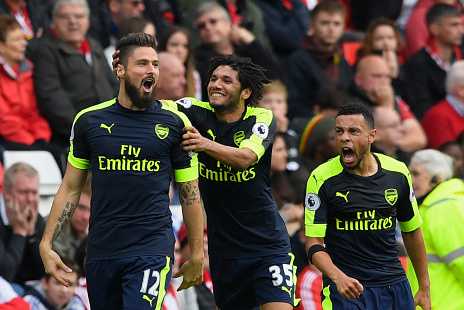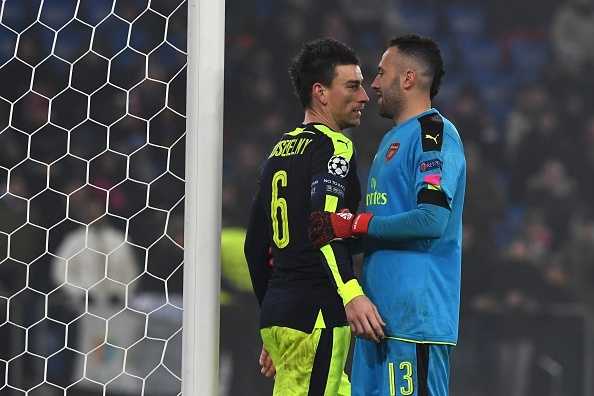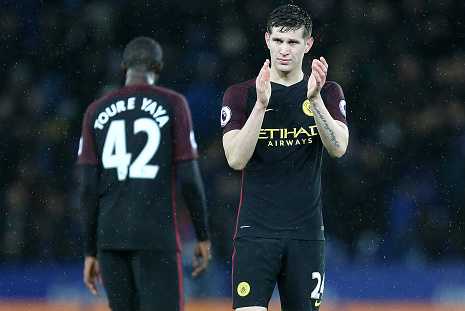Manchester City manager Guardiola made 46 changes in his first 14 Premier League lineups, more than any other manager. Top-of-the-table Chelsea made only seven under new boss Antonio Conte in the same period.
“Guardiola makes those changes to put one over the opposition,” former United manager Ron Atkinson says. “He’s not doing it because he doesn’t know his best team, though he never made changes at Barca as he does now. That shows that he hasn’t got the calibre of players which he had at Barca, where he just tweaked what Frank Rijkaard had done. Having Lionel Messi helped, too. At Bayern Munich, he took over the best team in the league too. It was almost harder to lose the league than win it for Bayern.
“Now he’s come to a club where there’s more competition, where he’s expected to win the league. This is the biggest challenge of his career, and he’s adapting. His football is different at City. I don’t see his side playing a pressing game as they did at Barca.”
Fourteen league games in, Manchester United manager Mourinho had made 29 changes as he searched for his best 11, with his selections and formations shifting constantly.
“If he had to name his best team because his life depended on it, I think he’d be uncertain about a couple of positions,” Atkinson says. “He’s got too many players that he’s trying to accommodate.”
Former Liverpool legend-turned-pundit Jamie Carragher is bemused by what’s going on tactically at Old Trafford.

Mourinho's decision to introduce Marouane Fellaini against Everton culminated in Fellaini's conceding a late penalty. Photo courtesy of Getty Images.
“Mourinho is criticised for not knowing his best team, but that’s a strange thing to say,” he says. “If your team is not playing well and individuals are not playing well, you can’t know your best team because you change it to try and find another solution.
“When your team is playing well and winning, you know what your best side is. United’s performances haven’t been good enough, so it’s not a criticism of Mourinho that he doesn’t know his best side. He’s had too many players who haven’t been playing well enough, and so he’s had to make changes.”
Mourinho’s tactics have switched accordingly.
“At the start of the season, United played a 4-2-3-1 with Paul Pogba playing as a No. 10, which didn’t suit him because he’s far better facing the opposition goal,” says former Premier League defender Danny Higginbotham, now a tactics expert in the British media.
“A problem United had was that [Zlatan] Ibrahimovic was getting isolated, with the three behind him dropping deep to do the defensive side of things. The change in more recent games is that while people are still saying United are playing a 4-2-3-1, I go to games and see it more like a 4-1-4-1 when the game is in flow.”
Higginbotham thinks Michael Carrick is key.
“When he plays, the team create a lot more chances,” he says. “Because Carrick is protecting the back four, the midfield four are able to push forward and are often in advance of Ibrahimovic. Zlatan is fantastic with his back to goal bringing others into play, but he was too advanced at the start of the season. Now, you’ll see Carrick feeding the ball to Ibrahimovic while the other midfielders rush forward. Ibrahimovic can even start play before involving himself later in the move.”
Despite United’s winning start, Ibrahimovic felt he wasn’t being used to his strengths by his teammates, but he’s happier now. The return of Carrick, who barely featured at the start of the season, has been notable. Mourinho likes him and was happy to see him offered a year’s contract when he arrived.
Had Louis van Gaal stayed, Carrick thought he would be on his way from Old Trafford after a decade at the club where he’s won everything. Sir Alex Ferguson always maintained Carrick was a slow starter, but despite that, Carrick was entitled to be baffled when he didn’t feature at the start of the season.

Carrick started in United's 1-0 win against Tottenham on Sunday. Photo courtesy of Getty Images.
“Mourinho probably didn’t realise how good Carrick is and what he brings to the team,” Higginbotham says.
Carragher also singles out Carrick.
“He is massively important, and I’ve always been a big fan of his,” he says. “He brings a calmness and knits the team together. But he’s 35 and can’t play every game.”
Higginbotham believes Mourinho’s tactical tweaks are always made according to their opponents.
“If United are expected to dominate, then Ander Herrera, who is full of energy, gets the licence to be a box-to-box midfielder,” he says. “Paul Pogba’s role barely changes, and he’s on the left side. When United play a better team, Herrera plays deeper.”
The Spaniard accepts this. “Now, I’m playing a more defensive role,” Herrera told me after a recent match. “I have to react when the team lose the ball and win it back. I also like to organise.
“I’m fine with adapting to whatever my manager wants me to do. I can play more offensively too—like I did against Man City in the EFL Cup.”
Carragher rates Herrera among United’s best players.
“Herrera covers a lot of ground and is aggressive...He came on against City in the derby and made a big difference,” he says. “When I’ve seen United at their best, it has been with Pogba, Herrera and Carrick in the middle.”
Atkinson describes Herrera as “a typical Man United player: quick, energetic, busy, lively. He always wants to be where the ball drops. He impresses me when he speaks, too. Football really matters to him, and I found that when I managed Atletico Madrid. They’re really proud to be footballers.”












